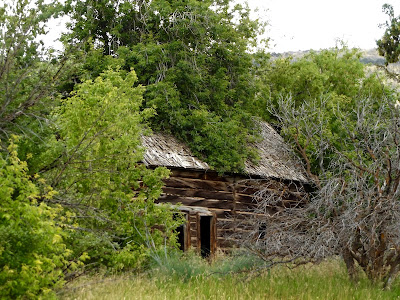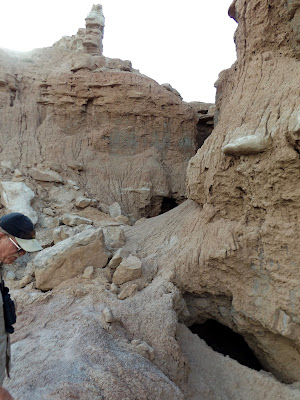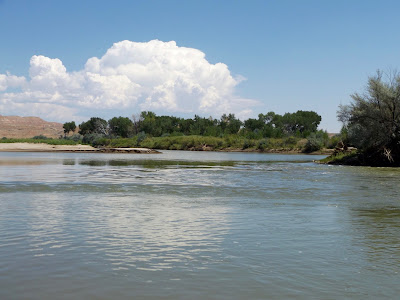August 3, 2016
The boats went into the water, and about damn time, if you ask me! They were beginning to look like permanent fixtures on top of the truck, but sure enough, they are lake-worthy. We kayaked out on Pelican Lake for a try at that bluegill fishery and did ourselves proud.
That night was all-you-can-eat bluegill at the Wuehrmann's. They were cleaned and cooked by one of us that wasn't me; however, I was a champ at catching and eating. I always like to do my part. Pelican Lake is a definite must-return.
 |
| Pelican is a very pretty lake, but doesn't offer much shore fishing due to the reeds. There are many other fisheries in the area that we would love to also try out on our next visit. |
There weren't many waterfowl out on the lake - dominantly Clark's and western grebes and a few American coots (in addition to us old coots).
I was surprised to see substantial sign of beaver activity in the cottonwood bottom adjoining the lake.
The refuge . . .
Presumably, the avian contingent prefers the Ouray Wildlife Refuge down the road. We returned there after our fishing expedition (one of us that wasn't me was ready to pack it in mid-afternoon) and got a life bird for our trouble - long-billed dowitcher. They are evidently in the midst of their migration; there was a passel of them.
We spotted them and then wanted to try a closer look at the huge array of birds. It was funny that as we approached, dang near every bird in the ponds took to the air, leaving only a few strays and the entire flock of dowitchers just sitting. Perhaps they were just too pooped from the previous leg of their migration . . .
 |
| This dike seemed to be reserved for great blue herons. |
 |
| The pelicans and cormorants made a nice salt-and-pepper effect. |
As we drove along the refuge road that separates wet from dry, I eagerly scanned the ponds to the right while the señor, in his own inexorable manner, was gazing off to the bizarre barren hills to the left when he spied a cave he wanted to explore. What?! 93 degrees over there and he wants to go clambering up and around, or 83 degrees by the water where I want to stand and watch - a fairly easy choice, to my way of thinking.
Alas, there's no getting around it: he simply must examine the strange geologic anomaly, so the birds had to wait and we got more exercise.
Even in this land where every turn presents a geologic wonder, those hills were intriguing, I must admit. Their composition was a strange crusty crunchy surface, but honeycombed throughout where water had undercut and flowed out from holes and caverns, several of which we inspected, very cautiously as they were clearly unstable.
 |
| Exceptionally unwelcoming terrain, but many swallows feel at home there. |
Dinos again . . .
Loathe to leave any museum unseen, we hied ourselves over to the Utah Field House of Natural History State Park Museum (what a handle that is!) in case we had not seen enough dinosaur-related exhibits. Just as I thought, we had already seen sufficient of that type of creature, but now we've seen even more.
The museum is well-done, although not extensive. I got a good chuckle from the woolly mammoth out there in the dino garden, primarily because the sign informed us that its hair is made from hemp but they have to rehemp (my word, not theirs) it periodically because the local birds are fond of the material for their nests.
 |
| This very cool wall was created from various-sized rock slabs, each of which contains one or more fossils from a quarry near Vernall. |
Dry Fork . . .
Rain kept us from our original plan for a day, but not to worry, we simply punted with an alternate scheme. Partially successful, we had a marvelous time in forest climes dampened and deliciously cool - down to 57 degrees, to be exact.
Astounding how much difference it made to turn out of town toward the high country and leave behind the dusty lower elevation for a change. A turn up-canyon revealed lush valley bottoms with picturesque small farms scattered along the way - Dry Fork.
Dry Fork was first settled in 1878 and is now as pleasant a place as any I've seen. I even remarked that I could see myself living there. Spoil-sport companion unkindly interrupted my reverie with a reminder about winter.
 |
| We spotted some of the earlier abodes of Dry Fork settlers. |
Moving upward from there on the Red Cloud Loop Road, we traversed a deep canyon with rocky fins jutting out above forest slopes green with a mixed array of tall trees.
Sprinkling rain enhanced the welcome scent of hardwoods and pines as the cooling breeze fanned us through the windows. It was positively luscious! The respite from dry heat brought out deer earlier than they would typically venture forth. We surprised one buck that was sipping rain water out of a depression in the pavement.
Alas, our alternate activity was eventually curtailed, too, as we gained elevation into the Uintas. Light rain continued and with it, as we left pavement behind, the road surface became sloppier with each turn. Having no interest is sliding off a mountainside, we turned back with the knowledge that we had found even more reason to return to Vernal for a later and longer visit.
Fishin' the Green . . .
With our three-day licenses in hand, we determined to try out a variety of the many fishing opportunities in the region. We had been admiring the Green River since our arrival; one day, we hop-scotched among a few fishing holes until we found one to our liking and settled right in for a most pleasant bout of worm-drowning, southern style.
Fshing is always good; that day, even the catching met our expectations. The take included three types of fish: catfish, small-mouth bass and an endangered Colorado pike minnow.
Along the way . . .
 | |||
| A very bizarre sandbar in the horseshoe bend section of the river near where we fished. |
 |
| I found this beautiful feather and the señor declared it to be from a red-tail hawk while I am left wondering about such a definitive statement. How could he possibly know? |
Another back-road adventure . . .
Both of us prefer to get where we're going via as many different routes as possible, so it was second nature to do the same after a recent long day out and about. It was a rather inauspicious beginning when we stalled behind some unidentifiable kind of road machine that would have lost a race with a snail. Moving so slowly that it sometimes appeared to be stopped, the crew aboard was clearly doing nothing at all as far as work, so all was a mystery to us. Unfortunately, it was a no-passing zone so we waited and waited until the road opened up and they waved us around.
Then it was just a matter of locating the alternate route, a so-called "improved" road. "Improved" is in the eye of the beholder; in this case, we encountered varying road surfaces because it was in the process of being rebuilt.
Critters along the way included a snake that neither of us could identify, beautiful - and the fastest reptile I've ever seen. One minute it was there and the next it was gone!
Throughout this region, we have seen lots of pronghorn that prefer irrigated hay fields for their graze. One in particular, though, opted for a dry unappetizing hilltop and made sure that his followers did the same.
The real surprise of that route came when we encountered a huge flock of common nighthawks. Calling a halt, I jumped out to watch the spectacle. It was absolutely magical: dozens of awesome birds dipping, diving, soaring and circling, rushing right by me close enough to touch but far too frenetic to get a picture. No idea what triggered that feeding frenzy, but swallows joined in, too, and I even spotted a bat, although it was not even sundown yet. Magical!
Other fun birds we got recently was a pair of chukars that crossed the road twice in front of us and a small flock of wild turkeys that graze in the field by the RV park, but I digress.
A roadside marker (Utah hides them and gives no warning that they are coming. I'm getting adept at spotting them and Chris is equally proficient at turning around when we've already zoomed past them) told an interesting story about a Green River ferry near there. Lars Jensen built his boat in 1881 and operated it and its successors until 1909, when ice took it. That year, its last operation was 86 trips across the river to transport so-called run-away Indians who were escaping the Uinta reservation to go to the Dakotas.
That sounds like a story worth pursuing.
We are repaired, again, and we were clean . . .
Much to our dismay, the repair to our trailer steps did not hold. Much to our gratitude, we were in the same town and so could ask the shop to do the job again and to get it right this time, which they seem to have done. The problem required several more days of heaving ourselves upward to gain entrance and to leap downward on exiting, hopefully landing and remaining on the step stool far below, but then, maybe we needed the extra exercise.
At our last stop, Chris washed the trailer, a pretty major enterprise, and also washed the truck, an even bigger enterprise since we had managed to cover it with caked-on red Utah clay. The trailer still looks good; the truck not so much, having gained a new coating on those back roads.
We were so inspired by all that clean that we scrubbed our carpet also.
Friends & kin . . .
A la RV lifestyle, we met another couple with whom we really hit it off. Our neighbors for a night, they were from Alpine, Texas, returning from a trip to Alaska. Turns out they are friends with a feller there who is more than likely my cousin on the Means family line. Some of my Means ancestors settled in Colony, Texas, along with the Kelleys when they were migrating from Louisiana, and then one branch of the family traveled on to the Alpine area. 'Twill be great fun to follow up on that.


























2 comments:
I have never seen this many Great Blue Herons in one place! What a lucky sight to see. I also love the fossil wall in the museum.... I wish I could have joined you for the really fresh fish dinner. Can't wait for the next episode.
Oh, that was just a small number of the herons; I couldn't get them all in the picture without backing it up too far. Maybe we'll luck out with a bluegill supper at home and invite you, Bobbi.
Post a Comment